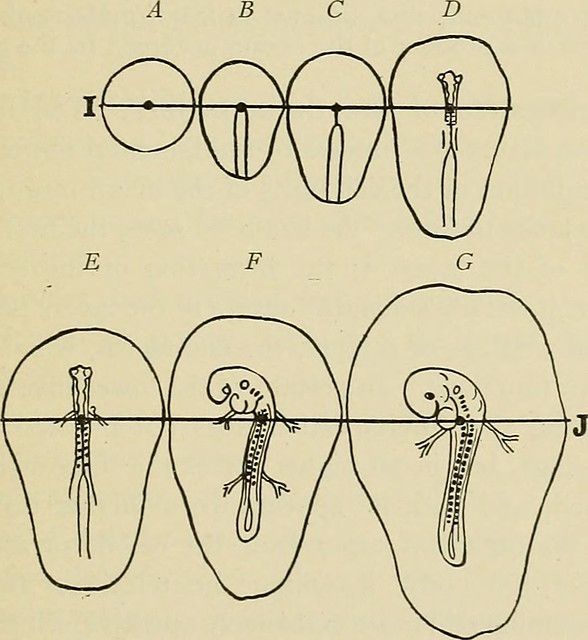I have been looking at the work of the body cartography project. This is something that has been underway for some time but I have only just discovered it. Perhaps this is because I have only recently begun to look more closely at how dancers work, however as artists of the body, they are finely tuned to somatic experiences. Body maps have interested me for a while, and the body cartography project bases its focus on the developing of experiential tools that are derived from somatics, (sensation-based movement practices), dance and choreography. The background scientific research they have done, because they are focused on movement and change rather than static facts, is focused upon embryology; the branch of animal biology that studies the prenatal development of gametes, fertilisation as well as the development of embryos and fetuses.
Carla Bottiglieri, a project researcher for the body cartography project, has stated;
"With embryology, anatomy ceases being the static, achieved geography of structures – a stillness that is primarily borrowed from the cadaveric inertia of the dissected body – and reveals what moved and still moves our seemingly silent interiors. Learning through embodiment may start from a choreographic-like mind, the one that takes images as maps, maps as diagrams, and everything as scores. In the case of embryology, the term score seems almost to be closer to music than to dance, and in fact lines and directions describing the all too busy movement of the forming embryo, in order to be “correctly” read, need kinematics being paralleled with dynamics: a play of intensities, rhythms, simultaneous events, different speed rates."
This statement immediately drew my attention, because I have for a while been working to develop a way of making images about interoceptual experiences that are not reliant upon static anatomy illustrations from medical textbooks, or some sort of fixed map that tries to pin down where things occur. I have been looking for various ways to open up my own and others awareness of the body's kinetic inner perception of its own sensations, which hopefully might bring about a more nuanced sense of our presence in the world and the experience of being.
Embryology Sections
Fetal skull
So why is this so important? The structure of the primate palate means we can't breathe and eat at the same time, but we can coordinate breathing and swallowing to allow for eating. The pharynx is the shared route for both functions, but it's used differently for each activity. When breathing, the pharynx dilates to keep the airway open, but when swallowing, it constricts to push food down the oesophagus. When at rest, the epiglottis is upright and allows air to pass into the lungs, but when swallowing, the epiglottis folds backward to cover the larynx's entrance, preventing food and liquid from entering the lungs. Swallowing is therefore a complex process that involves coordinating more than 26 muscles and 6 nerves. When swallowing, breathing temporarily stops, and becomes more irregular and this can lead to problems, some of which I have had to face myself at times. As part of my own process of self awareness, I have to make sure I am calm and relaxed when eating, if not I can easily find myself with muscle tension in the throat, which leads to a difficulty in swallowing due to a globus sensation (a persistent but painless feeling of having something stuck in your throat when there is nothing there). that I can experience because of anxiety. The complex interconnection of interoceptual experience, (somatic feelings) and the autonomic nervous system that mediates unconscious activities, is hard for me to understand and yet I have begun to think that it is very important. So for myself, my own body map has one of its focal points around the throat, and since I have had problems with plantar fasciitis, another is the base of my left foot.
Anatomical diagram of the throat
Now humble as the ripest mulberry
That will not hold the handling.
Coriolanus
Mulberry
If we die, all the creatures that live on and within us die too or have to move elsewhere, just as if and when the Earth dies, all the creatures that live on and within it will die too. In order to maintain some sort of 'homeostasis', an environment of co-habitation needs to be fostered, and this needs to be about mutual intra species processes of symbiosis, something that can be suggested by the processes of the visualisation of feelings, even if it cant be depicted from observation. The flow of movement that suggests the processes at work here is what the body cartography project is most interested in and it points out that the body is in its peak flow mode during the first few weeks of its life. Many of the signals that are sent out by an organising fetal entity are intra-species, a microbial life is being ushered in just as much as a mammalian one. The more we understand this, the less I would hope that we are bothered that some mammals are darker in skin tone than others.
The body cartography project uses dance as a form of embodied learning and communication. I posted recently on Katia Heitmann's work, whereby a dancer will observe others and then attempt to mimic their body movements as a form of archiving. The body cartography project is similar, in that a dancer wants 'to pay attention to and to move with things that are invisible yet also and therefore, invisible in the sense that you’re not seeing the same body structure and also invisible in the sense that things that are very patterned or repeated or are not very apparent sometimes, forgotten, like the sensation of wearing your clothes'...
Taken from a record of a conversation during the Fluid Spaces Event: Teknisk Museum, Oslo in 2022.
It seems to me that the dancer was searching for a way of communicating things that are on the edge of our awareness, in a similar way to how I am searching for a way of making myself and others aware of some sort of interconnected flow of energies, a flow that I could hopefully visualise in either drawing or ceramics.
A link to more embryology images here
The illustration that describes the transition of a dot, as in drawing A, its extension and growth through to a recognisable form at point G, is as much poetry as science. At no point is a body ever either as it is represented at B or at G or at any other point, all the images above are figments of the imagination of an artist.
B and G
Perhaps what I'm really interested in is the idea of 'becoming'. Becoming is a process that eludes observation and is hard to represent, which is why it is interesting to myself as an artist. Things that are directly analysable or measurable can reasonably easily be depicted, but there is a hard cognitive and perceptual struggle to be had, if we are to visualise processes that are continuous and often invisible and felt with senses other than the visual. This it seems to me is a worthwhile task, and it keeps driving me on to make the images I do and to believe that at some point these images might actually become useful.
Richards, R.J. (2010) The romantic conception of life: Science and philosophy in the age of Goethe. University of Chicago Press.
Wellmann, J. (2017) The form of becoming: embryology and the epistemology of rhythm, 1760–1830. Princeton University Press.
Wellmann, J. (2021). History of Embryology: Visualizations Through Series and Animation. In: McCallum, D. (eds) The Palgrave Handbook of the History of Human Sciences. Palgrave Macmillan, Singapore. https://doi.org/10.1007/978-981-15-4106-3_22-1
See also:
Maps made by our nervous systems
Drawings as aesthetic transducers
Katja Heitmann and embodied learning.
Eco awareness and OOO
Parascientific visions and Rayonism
Dr. Hippolyte Baraduc's theory of iconography,













No comments:
Post a Comment